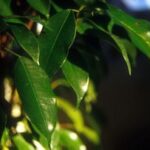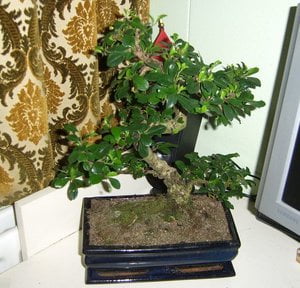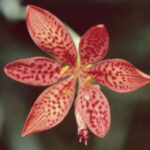Bonsai trees, sometimes called plant art, are regular trees transformed into delicate appearing miniatures. The transformation process includes root restriction along with stem and root pruning.
If you’ve ever marveled at a bonsai plant and secretly wanted to own one but were afraid to risk it, take heart. Indoor bonsai is a great way for beginners to learn the art and develop confidence while shaping one of the tiny trees. Ficus bonsai are hardy enough for beginners to grow indoors.
Devoted bonsai growers are opinionated. Fortunately, they’re also helpful. When you purchase your first bonsai, get instructions from the seller. Real bonsai devotees will not sell you a plant without telling you everything you need to know to nourish it. Don’t bother buying from sellers who only want your cash and have no idea what you’re supposed to do with the plant.
So how do you keep your Ficus Bonsai beautiful once you get it home? Regular watering, feeding, exposure to light, careful pruning and rare repotting will do the trick. Here’s how it all breaks down.
Watering
Regular attention to watering is very important. Keep your bonsai in a location where you won’t forget to water it. Ficus bonsai love light and humidity so kitchen and bathroom windows are good locations. Just don’t get the plant too close to the glass.
How do you tell if you’re bonsai is thirsty? For beginners, the simplest way is to feel the soil. If you scratch the dirt and it’s dry, you need to water the plant.
Feeding
Indoor bonsai have been said to have small appetites but do need to be fed. Some growers suggest using fertilizer solution at half strength and feeding the plant once a week. Other growers prefer to leave the solution at full strength and feed every other week. Do what works for you.
Light
Ficus bonsai are lovers of bright, even intense light. Keep them near bright sunny windows or beneath bright fluorescents.
Pruning
Most purchased bonsai plants already have somewhat of a formed shape that will require very little pruning to maintain that shape. Before going snap happy with the pruning shears, sit back and just watch and enjoy your plant for several weeks. When you do snip, do so carefully.
Repotting
Bonsai do not require frequent repotting. Consider repotting every two to three years. Repotting can be done any time. Some growers claim the absolute best time to be just before the spring growth spurt. You’ll need to half the roots and canopy then re-plant in well draining potting soil. If you want your bonsai to grow larger, re-plant inside a container that is one size larger than the current one.
Other recommended indoor Bonsai for beginners: Ficus, baby jade, ponytail palm, money tree, and Hawaiian umbrella tree.
Don’t be afraid to bring a beautiful bonsai into your home or office. Tiger Ficus or Chinese banyan is a forgiving bonsai and a good choice for beginners. Spend some time choosing the tree you like best. When you get home with it, check the soil daily for dryness, keep it in the light, and feed it according to fertilizer directions.





